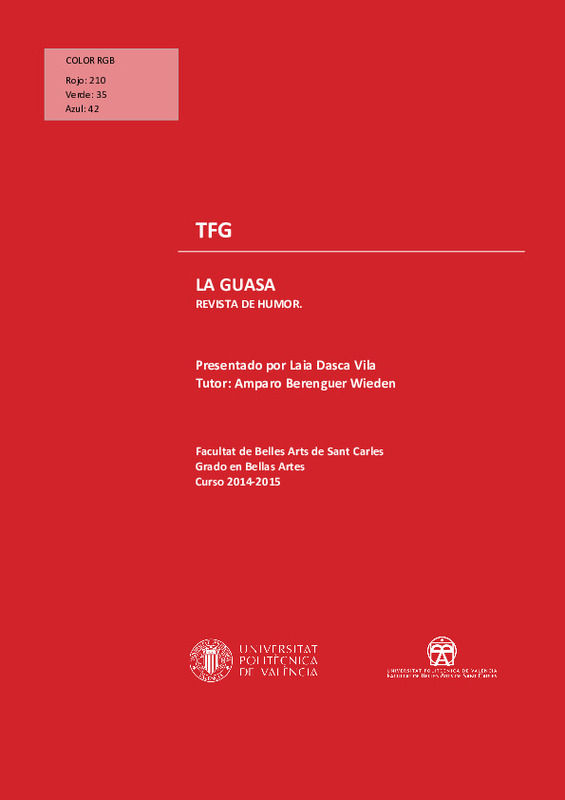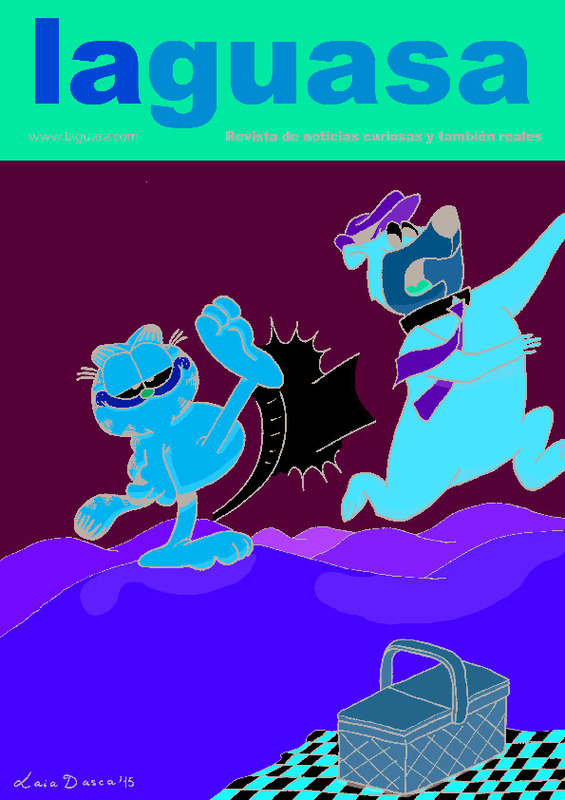JavaScript is disabled for your browser. Some features of this site may not work without it.
Buscar en RiuNet
Listar
Mi cuenta
Estadísticas
Ayuda RiuNet
Admin. UPV
La Guasa. Revista de humor
Mostrar el registro sencillo del ítem
Ficheros en el ítem
| dc.contributor.advisor | Berenguer Wieden, María Desamparados
|
es_ES |
| dc.contributor.author | Dasca Vila, Laia
|
es_ES |
| dc.date.accessioned | 2015-12-17T08:57:49Z | |
| dc.date.available | 2015-12-17T08:57:49Z | |
| dc.date.created | 2015-09-25 | |
| dc.date.issued | 2015-12-17 | es_ES |
| dc.identifier.uri | http://hdl.handle.net/10251/58931 | |
| dc.description.abstract | [EN] The work that is going to be described later is the personal creation of a humour magazine, whose main techniques are drawing and digital retouching. In the magazine are vignettes that talk about various topics such as: global warming, pollution, corruption and curious events, between January and may, 2015. These vignettes exist from current press reports. Name and title of the magazine “LA GUASA”, refers to the content of this indicating that “joke” is the issue. Often genres of opinion occur in argumentative texts, since the purpose of the author is to convince the public on his way of perceiving reality, exposing their points of view. In this sense, graphic jokes can be tools of opinion, and therefore are based both in the graphical analysis and the discursive basically using tools from the transmission of thoughts, views, and analysis of events. The vignettes provide just information to understand a concept, an idea. Thus achieving a simplified overview. | es_ES |
| dc.description.abstract | [ES] El trabajo que se va a describir a continuación es la creación personal de una revista de humor, cuyas técnicas principales son el dibujo y el retoque digital. En la revista aparecen viñetas que hablan de temas variados como: calentamiento global, contaminación, corrupción y sucesos curiosos, comprendidas entre enero y mayo de 2015. Estas viñetas existen a partir de noticias de prensa de actualidad. El nombre y título de la revista “LA GUASA”, hace referencia al contenido de ésta indicando que la “broma”, es el tema. Frecuentemente los géneros de opinión acontecen en textos argumentativos, ya que la finalidad del autor es convencer al público sobre su modo de percibir la realidad, exponiendo sus puntos de vista. En este sentido, los chistes gráficos pueden ser herramientas de opinión, y por ello se basan tanto en el análisis gráfico como en el discursivo utilizando básicamente herramientas procedentes de la transmisión de pensamientos, puntos de vista y análisis de los acontecimientos. Las viñetas, proporcionan la información justa y necesaria para entender un concepto, una idea. Así logrando una visión global simplificada. | es_ES |
| dc.format.extent | 37 | es_ES |
| dc.language | Español | es_ES |
| dc.publisher | Universitat Politècnica de València | es_ES |
| dc.rights | Reserva de todos los derechos | es_ES |
| dc.subject | opinión | es_ES |
| dc.subject | dibujo | es_ES |
| dc.subject | humor | es_ES |
| dc.subject | viñeta | es_ES |
| dc.subject.classification | DIBUJO | es_ES |
| dc.subject.other | Grado en Bellas Artes-Grau en Belles Arts | es_ES |
| dc.title | La Guasa. Revista de humor | es_ES |
| dc.type | Proyecto/Trabajo fin de carrera/grado | es_ES |
| dc.rights.accessRights | Abierto | es_ES |
| dc.contributor.affiliation | Universitat Politècnica de València. Centro de Investigación Arte y Entorno - Centre d'Investigació Art i Entorn | es_ES |
| dc.contributor.affiliation | Universitat Politècnica de València. Departamento de Dibujo - Departament de Dibuix | es_ES |
| dc.contributor.affiliation | Universitat Politècnica de València. Facultad de Bellas Artes - Facultat de Belles Arts | es_ES |
| dc.description.bibliographicCitation | Dasca Vila, L. (2015). La Guasa. Revista de humor. http://hdl.handle.net/10251/58931. | es_ES |
| dc.description.accrualMethod | TFGM | es_ES |
| dc.relation.pasarela | TFGM\24872 | es_ES |
Este ítem aparece en la(s) siguiente(s) colección(ones)
-
BBAA - Trabajos académicos [5086]
Facultad de Bellas Artes







